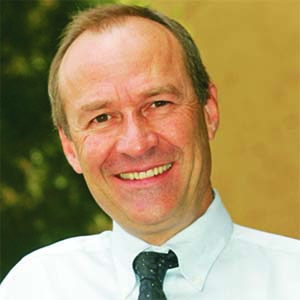Last month I placed the spotlight on some of the South African drivers who took part in the legendary 1965 Rand Grand Prix at Kyalami, the first international event under the then new three-litre Formula One rules. By Graham Duxbury, MD of Duxbury Networking
By Graham Duxbury, MD of Duxbury Networking
Of course, there are a number of South Africa’s finest whose careers pre-date or post-date this memorable event. They include Tony Maggs, Neville Lederle, Ernest Pieterse, Eddie Keizan, Paddy Driver, Basil van Rooyen and the Scheckter brothers.
Maggs was the first South African to drive for a ‘works’ F1 team. He made his debut at the British GP in 1961 in a Lotus, but it was the Cooper team who offered him Jack Brabham’s vacated seat for 1962. He rewarded them with a seventh place in the world drivers’ championship. While an outright win eluded him, he impressed with second place finishes at the French Grands Prix in ’62 and ’63. Local fans will also remember him winning two Nine Hour races partnering David Piper.
Described by Stirling Moss as the “most improved driver of 1962”, Neville Lederle was the first South African driver to score a world championship point (in the South African GP at East London). He went on to win the local F1 championship in 1963 before his career was brought to a premature close following a sports car accident that damaged his foot.
Enigmatic Ernest Pieterse flashed across the F1 firmament like a shooting star, rising from relative obscurity to short-lived fame as one of the sub-continent’s greatest drivers. Success was perhaps too easy and failure unacceptable for this talented young racer who won the 1962 SA drivers’ championship in an ex-Jim Clark Lotus 21. His retirement came unexpectedly in early 1965 just five years after his first F1 appearance. He was only 26 years old.
Eddie Keizan, perhaps better known for his exploits in saloon and sports cars, having won the SA Production Car championships in 1969, 1970, 1977, and 1978, was a great all-rounder. He proved this when he first stepped into a single-seater racer, and again in a F1 car. He competed in local F1 races and in three SA Grands Prix – in 1973 and 1974 in the ex-Jackie Stewart Tyrrell and in ’75 in the ex-Emerson Fittipaldi Lotus 72. In the latter, he finished thirteenth, behind Jackie Ickx and ahead of Dave Charlton.
Paddy Driver is one of the few racers who successfully made the transition from two wheels to four during a career that spanned more than 40 years. He raced motorcycles in Europe, finishing third behind Mike Hailwood and Giocomo Agostini in the 1965 500cc world championship. In 1963 Paddy decided to try car racing. He dovetailed his bike racing with a season of Formula Junior in England competing against John Love, Tony Maggs, Peter Revson and future world champion Denny Hulme.
Paddy entered a F1 Lotus 24 in the ‘63 Rand GP at Kyalami. He finished seventh and then “totalled” the car in a practice accident before the South African GP a couple of weeks later. Twice a South African Formula 5000 champion, he competed in the 1974 South African GP in a Lotus 72 which also carried him to fourth place in the local driver’s championship that year.
Basil van Rooyen, unquestioningly South Africa’s leading touring car driver between 1963 and 1968, took to single-seater racing – and F1 cars in particular – like a duck to water. His F1 debut came in John Love’s aging Cooper in the South African GP on New Year’s Day in 1968. He quickly switched at a more competitive Brabham BT24 for the rest of the local F1 season, winning in Rhodesia and at Pietermaritzburg.
Van Rooyen opted to race a more modern McLaren M7A in 1969 and won first time out at Killarney. He qualified an impressive ninth for the South African GP but retired. He won for a second time at Pietermaritzburg although his hopes of winning the South African drivers’ championship evaporated with a practice accident at Kyalami in May. A tyre punctured at over 160mph and Van Rooyen injured his back when thrown clear of his crashing car. He did not appear in F1 again.
At the end of the 1973 season the international oil crisis seriously affected South Africa and a temporary ban on motoring sport was on the cards.
Fortunately for South Africans, the gloom was dissipated by the arrival of Jody Scheckter, who rapidly ascended the ranks to F1 stardom and claimed the focus of fans’ attention locally and around the world.
In my next column we’ll take a look at the lasting impact of the Scheckter brothers – Jody and Ian – on local and international motorsport.
